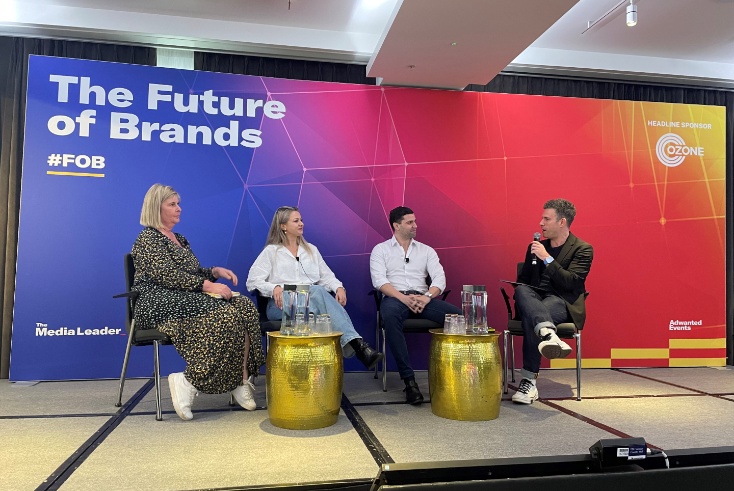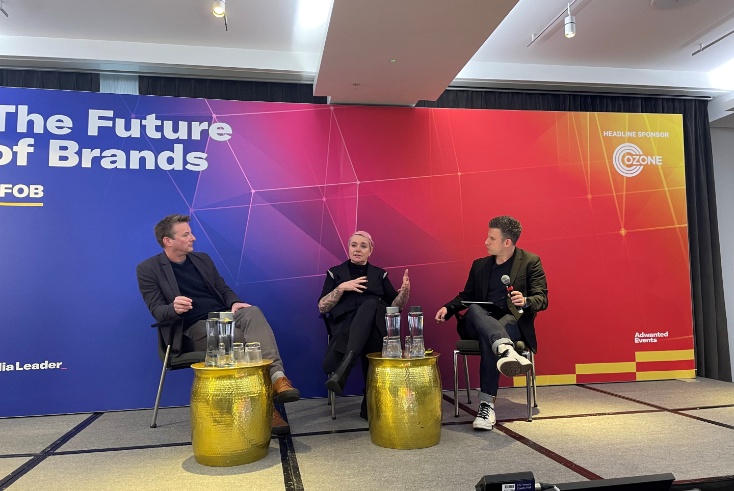Should creative and media reconcile? It’s complicated

The Future of Brands 2024
For many years, the industry has moved away from an integrated creative and media agency model. But is it time to reconsider?
As creative and media continue to jostle for position with clients, The Future of Brands 2024 explored how to reconcile the two disciplines.
In a fireside chat with The Media Leader editor-in-chief Omar Oakes, Tom Curtis, executive creative director at EssenceMediacom, and Laura Jordan Bambach, founder and chief creative officer at startup agency Uncharted, agreed that some of the best work they had done had been when media and creative worked closer together.
Jordan Bambach, who was previously president and chief creative officer at Grey London, said: “All the best work I have done is when media and creative work hand in hand. I think that separation is really painful for everyone because it tends to then just get the same old, same old — and people fall into bad habits.
“It’s amazing what brilliant media and creative can do to make something that you think might work really, really sing with that audience.”
Curtis stressed that creative and media “work brilliantly well together” when they have “absolutely clear, committed goals”, know what they are doing and there is little competition. One example is creative and media being briefed together to avoid problems further down the road with formats and media placements.

Coming from the top
One of the main reasons for the “tension” between creative and media agencies was that they want different things and have different models, according to Curtis.
He explained: “Everyone in this room that’s got any kind of understanding of how the industry works is going to agree that they [creative and media] don’t often work very well together, particularly when they’re outside of the competitive holding companies. But they should work better together and it is ultimately often down to the marketer.”
The marketer will have to “take control of that situation” if they want a better integrated process between the two disciplines, he noted.
Jordan Bambach emphasised the importance of “great leadership from the top” for media and creative to work in a more trusting, open and collaborative way, as well as organising structures of the commercial deals first so “you can just get on with it as a team”.
She added that the industry should “not be scared” of “messy” creative ideas as more diversity of thought, backgrounds and expertise in the room ultimately creates better work.
It’s complicated
Another panel at The Future of Brands, also hosted by Oakes, dived into what it would take for media and creative to be more integrated.
For Sally Weavers, founder of Craft Media, there is a need for a more “holistic” approach to all comms strategy, bringing together not just media and creative, but also PR and other partners.
Weavers could see “advertisers getting overwhelmed by multiple strategies” and what they needed was “something that glues everything together under one KPI”. Using an analogy of five-year-olds playing football and chasing the ball, she said Craft Media tried to “spread our players out on the pitch and make sure they’re all kicking towards the same goal”.
Olya Dyachuk, global media and data director at Heineken, agreed on the need for “a glue that connects everything”, but questioned if that talent should sit internally in the business or externally.
She highlighted that it was “complicated” as businesses were “still very siloed” and that not many teams in the world had integrated brand and trade teams, and some had separate departments with different KPIs, making campaign planning difficult with different briefs and deadlines.
Like Weavers, Dyachuk believes that, aside from integrating creative and media, one must also consider below-the-line, above-the-line, experiential and PR activity together.
The only way for agencies to collaborate, for Dyachuk, would be “consistent KPIs” related to the business that everyone would be briefed on.
Getting around the table earlier
Sebastien Bourne, head of media for north west and central Europe at HP, works with an in-house team with creative and media, and emphasised the importance of “getting everyone around the same table” for the briefing.
Weavers thought that was “too late”, stressing that you needed time for creative and media agencies to “chew the fat”. Too often, a creative agency would present a finished TV ad — something that already limits what the media agency can do.
She continued: “If you come to me earlier in the process with an idea, then I can help you make that bigger and better and more famous. But don’t leave it until you’ve got an ad that the client loves. Let’s have that conversation before any of us put pen to paper to start thinking about it.”
A missing link
For Bourne, what has “always been missing” is a project manager or comms planning strategist “to bring everyone together going in the same direction”. This would align data science planning, media tactics and creative with first-party data insights.
In future, Bourne and Dyachuk saw AI as a way to automate “grunt work” and free up time for both media and creative teams to work on “higher-value tasks” and test new ideas.
While AI will “never be the one to create ideas”, Dyachuk said, it would help if it could “find a way to measure success better” for brands and agencies.




